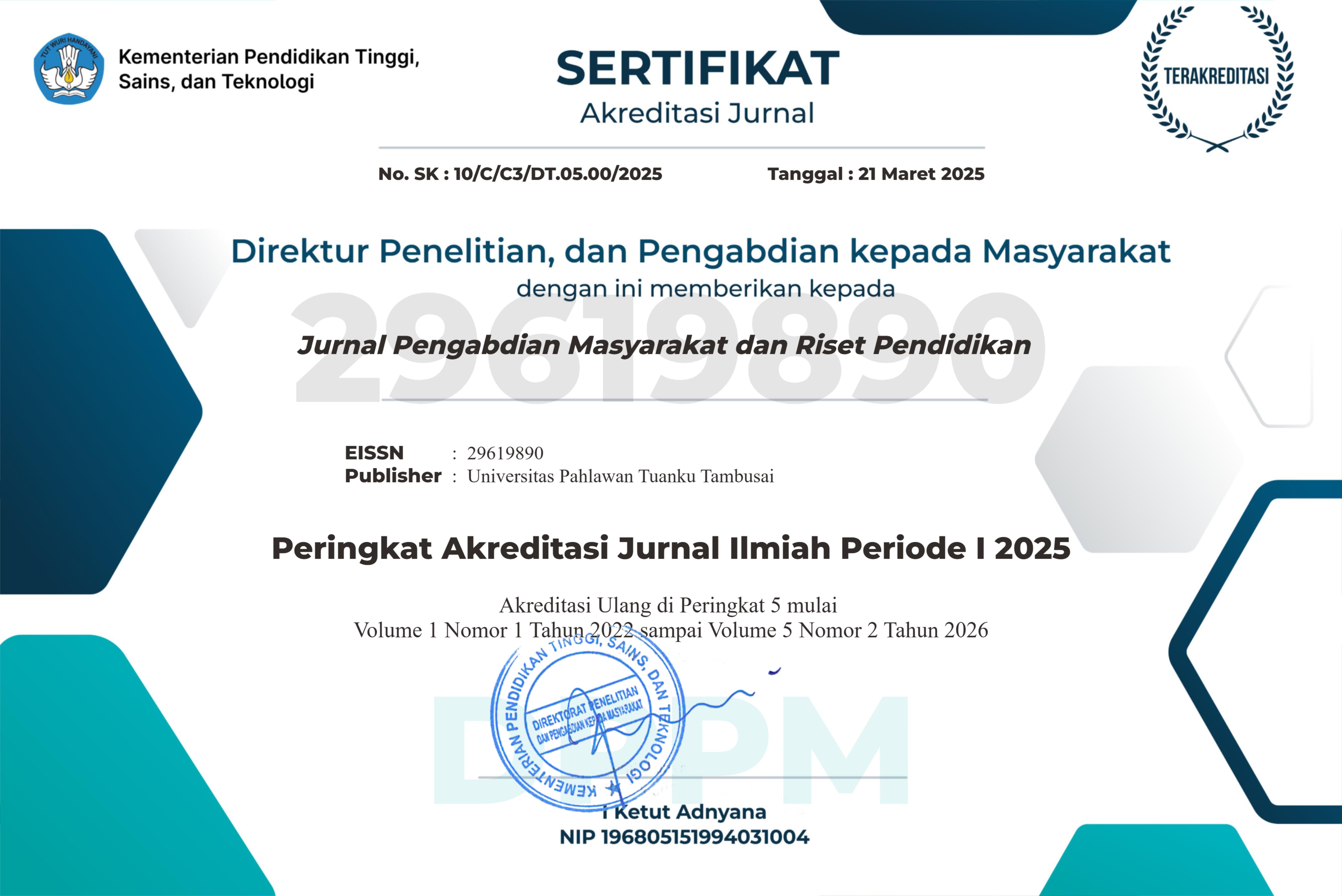The Application Of Simple Learning Strategies To Improve Students' Understanding Of The Present Continuous Tense And Present Perfect Tense
Penelitian
DOI:
https://doi.org/10.31004/jerkin.v3i4.1203Keywords:
Grammar Learning, Present Continuous, Present Perfect, Elementary School, Box TensesAbstract
The ability to understand grammar is an essential foundation in the English learning process, especially at the elementary level. Among the various forms of tense, Present Continuous and Present Perfect are often the main difficulties for elementary school students due to the complexity of their structure and the meaning of time. This study aims to examine in depth the application of simple and contextual learning strategies in improving students' understanding of the two types of tenses. With a descriptive-qualitative approach, the research was carried out through observation, teacher interviews, and the distribution of questionnaires to grade V students at SD Negeri 067694. The results showed that strategies that combined hands-on practice, contextual approaches, and the use of game media such as Tenses Box were able to increase students' participation, comprehension, and enthusiasm in learning grammar. This study recommends the application of active and meaningful learning approaches as an alternative solution to the limitations of traditional teaching models that tend to rely on memorization.
References
Arsyad, A. (2015). Learning Media. Jakarta: Rajawali Press.
Azar, B. S. (2016). Understanding and Using English Grammar (5th ed.). Pearson.
Brown, H. D. (2000). Principles of Language Learning and Teaching (4th ed.). Longman.
Creswell, J. W. (2012). Educational Research: Planning, Conducting, and Evaluating Quantitative and Qualitative Research (4th ed.). Pearson.
Harmer, J. (2001). The Practice of English Language Teaching. Essex: Longman.
Heinich, R., Molenda, M., Russell, J. D., & Smaldino, S. E. (2002). Instructional Media and Technologies for Learning (7th ed.). Merrill Prentice Hall.
Krashen, S. D. (1982). Principles and Practice in Second Language Acquisition. Pergamon.
Lado, R. (1964). Language Teaching: A Scientific Approach. New York: McGraw-Hill.
Nunan, D. (2004). Task-Based Language Teaching. Cambridge University Press.
Pratama, R. (2021). "The Effectiveness of the Use of Grammar Game Media on the English Learning Outcomes of Elementary School Students". Journal of Language Education, 8(2), 45–53.
Richards, J. C., & Renandya, W. A. (2002). Methodology in Language Teaching: An Anthology of Current Practice. Cambridge University Press.
Sudijono, A. (2009). Introduction to Education Statistics. Jakarta: Rajawali Press.
Sugiyono. (2017). Quantitative, Qualitative and R&D Research Methods. Bandung: Alfabeta.
Thornbury, S. (1999). How to Teach Grammar. Pearson Education.
Vygotsky, L. S. (1978). Mind in Society: The Development of Higher Psychological Processes. Harvard University Press.
Downloads
Published
How to Cite
Issue
Section
License
Copyright (c) 2025 Zahra Meida Lutfiah, Eva Betty Simanjuntak, Elisa Rohali Hasibuan, Christin Novstasya Saragih, Elisabeth Nopianty S, Rosa Caecilia Sitangggang

This work is licensed under a Creative Commons Attribution-ShareAlike 4.0 International License.















